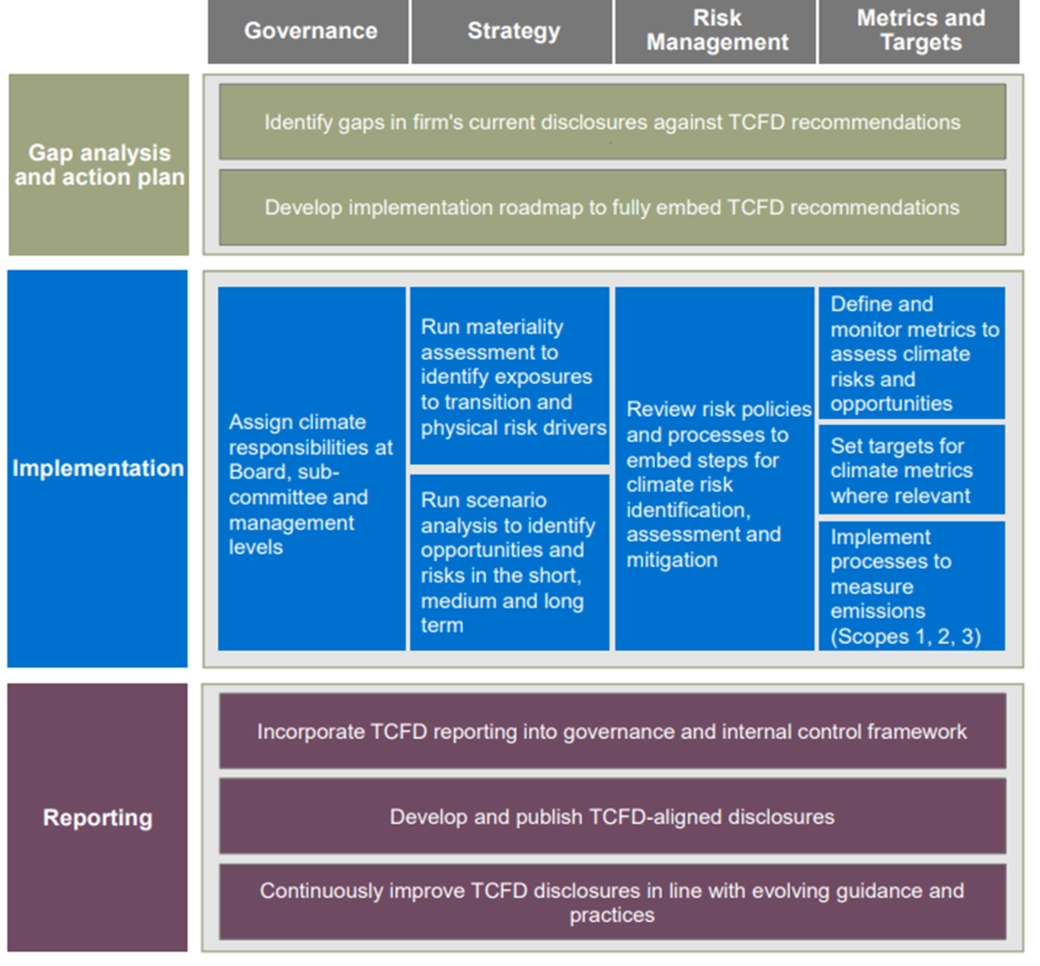Transition risks
Risks linked to the extensive policy, legal, technological, and market changes needed for the world to transition into a low-carbon economy, such as:
- Regulatory risk from impact of climate change mitigation policies on company assets
- Reputational risk from public perception of company inaction on climate change
Physical risks
Risks linked to physical impacts of climate change, encompassing acute risks, which are event-driven, and chronic risks, which reflect long-term shifts in the climate system, such as:
- Impacts of severe flooding events on crop yields (Acute)
- Impacts of sea level rise on company facilities (Chronic)
How Mazars helps
- Define risk appetite and operational structure with climate risk policies, procedures, KPIs, KRIs, and controls.
- Assess exposure to climate-related risks through short- and long-term scenario analysis (Mazars Climate Risk Stress Testing Tool)
- Implement TCFD recommendations*
- Conduct an SEC climate-related rule readiness assessment
- Report on ESG disclosures and dashboards
- Enact an internal and external communications strategy
- Identify and secure climate-related opportunities for building internal and macro-economic resilience
- Manage climate-related risks, compliance, and value creation opportunities through a double materiality approach
- Build a roadmap toward a net-zero future
*Task Force on Climate-related Financial Disclosures (TCFD)
In many countries, companies that are not already following the recommendations of the TCFD will soon have to take heed of them and address this framework’s four key pillars: governance, strategy, risk management, and metrics and targets.
We can support your business in implementing TCFD’s pillars through our wealth of expertise in climate regulation, governance, risk management, quantitative solutions, and non-financial reporting.
Our TCFD approach is structured around three stages: gap analysis and action plan, implementation, and reporting.



